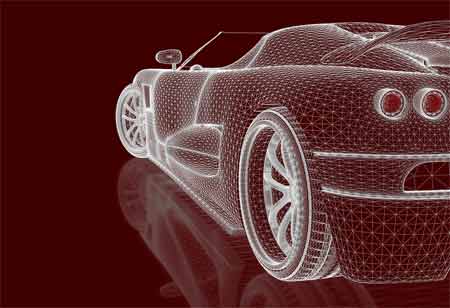THANK YOU FOR SUBSCRIBING
THANK YOU FOR SUBSCRIBING
Be first to read the latest tech news, Industry Leader's Insights, and CIO interviews of medium and large enterprises exclusively from Auto Tech Outlook

By
Auto Tech Outlook | Monday, November 04, 2024
Stay ahead of the industry with exclusive feature stories on the top companies, expert insights and the latest news delivered straight to your inbox. Subscribe today.
European hybrid vehicles are gaining popularity due to EU emissions regulations, rising fuel prices, and battery and electric motor technology advancements.
FREMONT, CA: Hybrid vehicles have emerged as a significant player in Europe's drive towards sustainable transportation. These vehicles, which combine a traditional internal combustion engine with an electric motor, offer a compelling blend of efficiency, performance, and environmental friendliness.
The Rise of Hybrid Vehicles in Europe
Hybrid vehicles have seen a significant rise in popularity across Europe, driven by regulatory, economic, and technological factors. European Union regulations on vehicle emissions are among the most stringent globally, incentivising automakers and consumers to seek low-emission alternatives, such as hybrids, that align well with these standards. Concurrently, the upward trend in fuel prices has made fuel-efficient vehicles more attractive to consumers, with hybrids offering a middle ground between performance and economy. Advances in battery and electric motor technologies have further enhanced hybrid vehicles' efficiency, reliability, and appeal. Moreover, government incentives, including tax breaks and subsidies, have accelerated hybrid adoption by reducing consumer upfront costs.
Benefits of Hybrid Vehicles
Hybrid vehicles offer notable benefits, underscoring their suitability for the European market. By using gasoline and electric power, hybrids reduce fuel consumption significantly compared to traditional cars. This dual-power system also lowers greenhouse gas emissions, improving air quality and supporting Europe’s environmental goals. In electric-only mode, hybrids also deliver a quiet, smooth driving experience—particularly advantageous in urban settings. Regenerative braking technology allows hybrids to capture and store energy during braking, increasing efficiency and range. Hybrids provide a greater driving range than fully electric vehicles, mitigating range anxiety and making them a practical choice for many European drivers.
European governments have implemented a range of incentives and policies to promote the adoption of hybrid and electric vehicles. These measures include purchase subsidies for consumers who choose eco-friendly cars. Additionally, tax breaks, such as reductions in vehicle registration or ownership taxes, help to make these options more affordable. Many regions also provide benefits like free or discounted parking for hybrid and electric vehicles, particularly in low-emission zones, to support sustainability goals. Furthermore, in some urban regions, dedicated lanes are available for hybrid and electric cars, reducing congestion and improving travel efficiency.
As technology advances and battery costs decline, hybrids are expected to be crucial in transitioning to a more sustainable transportation system. Additionally, the increasing availability of charging infrastructure and the development of plug-in hybrid models are further driving the adoption of hybrid vehicles.
Hybrid vehicles represent a significant step towards a more sustainable transportation future in Europe. By offering a balance of efficiency, performance, and environmental friendliness, they appeal to many consumers. As technology evolves, hybrid vehicles are poised to become an even more integral part of the European automotive landscape.
 Copyright © 2025 AutoTech Outlook. All Rights Reserved | Privacy Policy | Subscribe | Sitemap | About us | Feedback Policy | Editorial Policy
Copyright © 2025 AutoTech Outlook. All Rights Reserved | Privacy Policy | Subscribe | Sitemap | About us | Feedback Policy | Editorial Policy 



